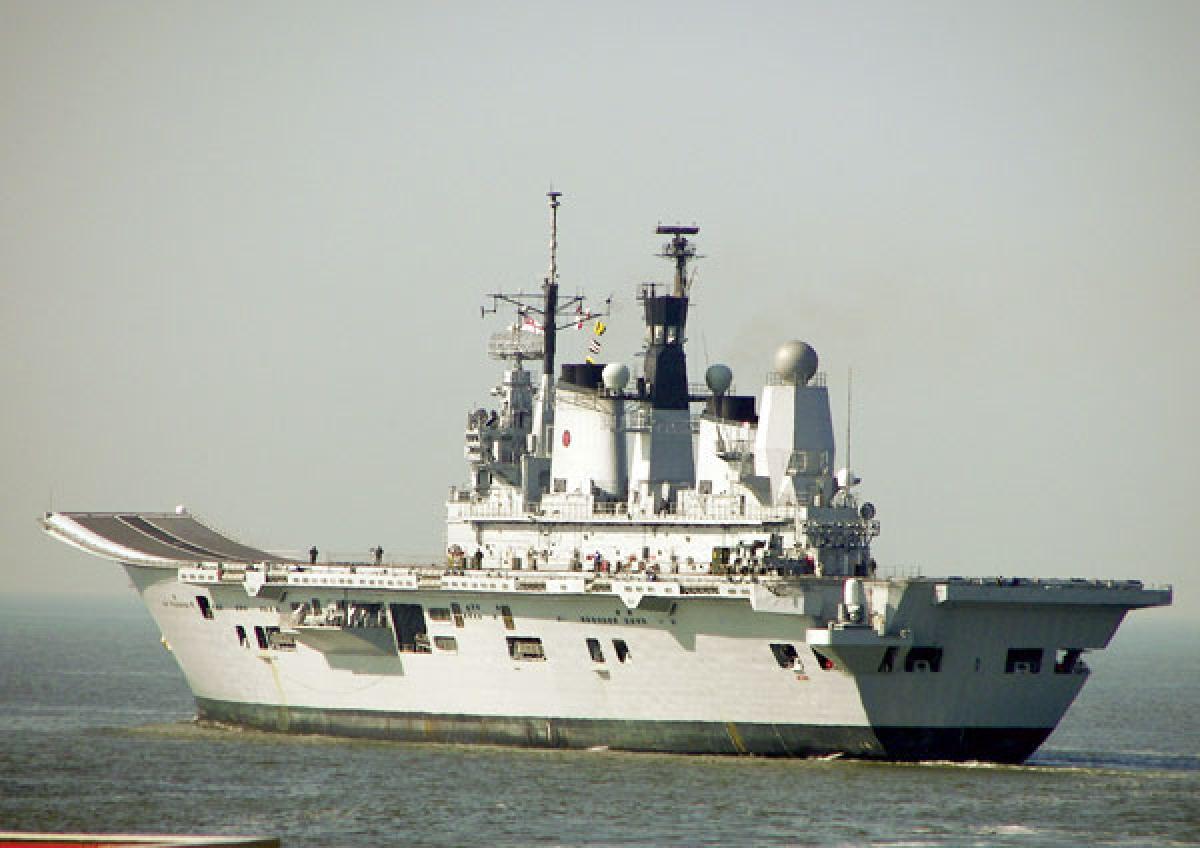Once the world’s mightiest fleet, Britain’s Royal Navy is reeling from recent defense cuts announced in October as part of the United Kingdom’s Strategic Defense and Security Review. These cuts include termination of the UK’s maritime-patrol aircraft capability through cancellation of the MRA.4 Nimrod program, as well as decommissioning HMS Ark Royal (pictured here), the youngest of the Invincible-class small aircraft carriers, and retirement of all Harrier vertical and/or short take-off and landing (V/STOL) aircraft by 2011. The V/STOL variant of the Joint Strike Fighter (F-35B) also has been canceled in favor of the conventional aircraft-carrier variant (F-35C). HMS Queen Elizabeth, first of the new class of large aircraft carriers, will not enter service until 2016. The new carrier, however, will only operate helicopters when commissioned, because the F-35s that would have been carried on board the ship have been delayed until 2020. A second aircraft carrier, Prince of Wales, is now expected to enter service in 2019 and will be fitted with catapults and arresting gear to allow for interoperability with allied naval aircraft. It is doubtful the Royal Navy will be able to afford both carriers at the same time, so Queen Elizabeth may be mothballed when the newer Prince of Wales enters service. Concerning the surface fleet, there will be a reduction from 23 to 19 destroyers and frigates. Seven Astute-class submarines also will be built (although the newly commissioned first of its class ran aground on 22 October and likely will cost millions of pounds to repair). Finally, the decision has been made to keep an independent nuclear deterrent, thus the UK’s Trident submarines and their follow-on program likely will remain alive and funded.
Shipbuilder Swiftships of Morgan City, Louisiana, has delivered the first of up to 15 35-meter coastal patrol vessels to the Iraqi Navy. Numbered P-301, the new patrol boat was commissioned at Iraq’s Umm Qasr naval base with a ceremony on 26 September. Built of aluminum and capable of speeds in excess of 30 knots, the new boats can travel 1,500 nautical miles while cruising at 12 knots. Boasting an endurance of six days, P-301 and her sisters join an Iraqi fleet that will be taking over full responsibility for Iraqi waterway protection during 2011. One of their most important duties will entail protection of the nation’s oil terminals that bring in some 85 percent of the Iraqi gross domestic product.
Trinidad and Tobago’s Coast Guard, which had intended to take delivery of three offshore patrol vessels from Britain’s BAE Systems, has instead canceled the program due to delays and overruns. The OPVs, which were ordered in 2007 for £150 million, were built at Scotstoun on the Clyde and had been expected to play a major role in management of the Caribbean nation’s exclusive economic zone, as well as maritime law enforcement and special operations missions. With the announcement of the program’s cancellation, the shipbuilder will attempt to sell the completed vessels elsewhere.



